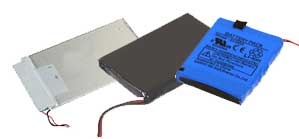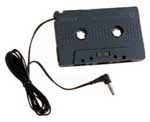I’m surprised at the difficulty and expense of replacing iPod batteries. Not yet owning an iPod, I have been learning how individual models of iPod require different batteries and replacement techniques. Why should they cost so much and be so hard to swap?

In my work as a private music teacher and computer tutor, a CD-Walkman style of player is more appropriate than an iPod, so far. Swapping discs is what I need to do throughout the day, so I’ll save my $$$ for an iPod to be purchased when the time is right.
After many visits to Best Buy, including exchanging and returning at least four defective CD/MP3 players from Audiophase and Panasonic, I now own and use an affordable Sony CD/MP3 player. It takes two AA batteries and accepts rechargeables. Priced at around $60, this Sony player comes with basic headphones and can play through my car stereo via a common $20 cassette adapter. Sound quality is excellent, and button controls are convenient.

Sony’s CD/MP3 portable uses the same rechargeable AA batteries as my Fuji FinePix 4700 digital still camera. I own ten batteries and one slow 24-hour charger, so four batteries are in constant service, and six are charged or being recharged. Very convenient, modular, flexible, inexpensive, and low-maintenance.
When you purchase a late model CD or CD/MP3 player, the package mentions an approximate number of hours the unit will play from a fresh set of throwaway AA decent-quality batteries. Numbers of hours such as 35 or 85 or similar are displayed prominently under the impenetrable plastic wrapping, and some players come with one set of batteries included in the factory packaging.
I thought these duration numbers were bogus, but now I understand what they represent. Different power-management technology is incorporated into different units, and the more you pay the more you can play on one charge or set of throwaways. Simple enough, and Apple does and says the same thing, more or less, each time a new iPod or laptop will run longer on a charge.
Digital cameras are unpredictable regarding consumption of battery power, because each set of images and playbacks is different than every other, depending upon zooming, flashing, transferring, and other variables. But CD/MP3 playback battery drain is predictable over a large group of users, allowing Sony and other reputable manufacturers to offer approximate numbers of hours between battery replacements or charges.
I am very impressed with the battery power situation on my particular Sony. With my most recently-charged, high-mileage AA duo, I played the Sony for many hours in Tucson before driving 1300 miles to San Francisco, using the player most of the way without a stutter. That was one month ago, and I’m still in San Fran on the next charge, albeit with not much usage since the long journey. You see my point, I’m sure.
Camera manufacturers can choose between AA and custom batteries. The former are cheap, flexible, ubiquitous, and reliable, but often not as long-lasting per charge as today’s expensive camera-specific batteries. Purchasers should take this aspect into consideration when deciding which digital still camera to buy, along with the other 999 factors that influence the choice.
Computer companies all use special batteries in their laptops. Modular, easily-swappable batteries are less common as portable computers become lighter and more powerful. We want our iBooks and PowerBooks (and Dells and Toshibas) to run forever on a charge while performing complex, demanding tasks without a whimper. Battery technology is advancing along with other hardware and software, all in the service of end-user convenience.
Laptop battery management is an arcane topic that few of us take seriously. Our portable Macs run so long and so efficiently using battery power that we take this technology for granted. When we’re near an electric outlet we plug in our power adapters, and when we’re away from electricity we use battery power. That’s not too tricky. Some of us understand how to get the most time out of every charge, but most of us don’t.
Look around you. Which gizmos are in service thanks to contemporary battery technology? Cellular phones! Palm and other handheld computers! Portable gaming devices! More! More! But no batteries = no contraption or device. Are batteries the “upstream†or “downstream†technology here? Think it over and offer your opinion below.
I’ll be reading your answer while I’m admiring the fog from the living room of the house we’re sitting, using battery power on my reliable clamshell blue and white original iBook and listening to a 700 minute MP3-CD on the Sony, awaiting a break in the fog for a digital photo of the Golden Gate Bridge. I’m still wondering why iPod batteries can’t be replaced as easily as those in my Sony player, iBook, or Fuji camera.

Leave a Reply
You must be logged in to post a comment.